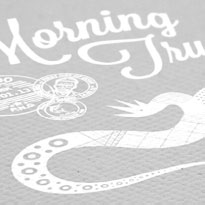Salt Water Crocodile
2020 Releases
SALT WATER CROCODILE
The New Guinea crocodile (Crocodylus novaeguineae) is a small species of crocodile found on the island of New Guinea north of the mountain ridge that runs along the centre of the island. The population found south of the mountain ridge, formerly considered a genetically distinct population, is now considered a distinct species, Hall’s New Guinea crocodile (C. halli). In the past it included the Philippine crocodile, C. n. mindorensis, as a subspecies, but today they are regarded as separate species. The habitat of the New Guinea crocodileis mostly freshwater swamps and lakes. It is most active at night when it feeds on fish and a range of other small animals. A female crocodile lays a clutch of eggs in a nest composed of vegetation and she lies up nearby to guard the nest. There is some degree of parental care for newly hatched juveniles. This crocodile was over-hunted for its valuable skin in the mid 20th century, but conservation measures have since been put in place, it is reared in ranches and the International Union for Conservation of Nature (IUCN) lists it as being of “Least Concern”.
Saltwater crocodiles (Crocodylus porosus) inhabit both fresh and salt water and are endemic to the Western Pacific, South-East Asia and Australia. With Papua New Guinea located within the proximity, it is home to both the salt and fresh water crocodiles. PNG has over 800 languages, the two main languages also have names for crocodile; ‘Huala’ in ‘Motu, ‘Pukpuk’ in the Pidgin language.
Sepik is also home to the Chambri tribe, who are also known as the “Crocodile Men of Papua New Guinea.” Crocodiles are sacred to the Chambri, who believe that they descend from crocodiles that migrated to land from their nearby river.
The unique initiation rite of the Chambri pays homage to this spirit animal. Young men live separately from the rest of their tribe for six weeks prior to the ceremony, which culminates in crocodile scarification. Tribal elders make hundreds of small, deep cuts on the young men’s back and buttocks. The initiates are held down and not allowed any kind of pain relief, as they need to withstand pain in order to become men. Once the cutting is over, the young men are placed close to the communal fire. Smoke is blown over their back to purify them, and clay and tea tree oil are massaged into the wounds. This ensures that their scars remain raised when they heal, looking a bit like crocodile skin.
Used on Coin and Notes (Cash): The ONE KINA coin first released in 1975 is silver in colour with a diameter of 23.72mm and is recognisable by the central hole of 6.9mm. The reverse design displays two crocodiles; The Saltwater Crocodile (Crocodilus Porosus) and the Freshwater Crocodile (Crocodilus Novaequineae).
Technical Details
- Stamp Size
- 40mm x 30mm
- Souvenir
Sheet Size - 145mm x 100mm
- Sheetlet Size
- 145mm x 100mm
- Denomination
- K1.60, K5.00, K6.90 & K20.00
- Sheet Contents
- 25
- Format
- Horizontal
- Perforation
- 2mm
- Colours
- 4 colour process
- Paper
- Tullis Russel Non-posphor 104gsm
- Gum
- Unwatered mark, PVA Gummed
- Printing Technique
- Offset, Lithography
- Designer
- Banian Masiboda - Philatelic Production
- Printer
- Henan Printers CN
- Issue Date
- 28th July, 2020
- Withdrawal Date
- 28th July, 2021

